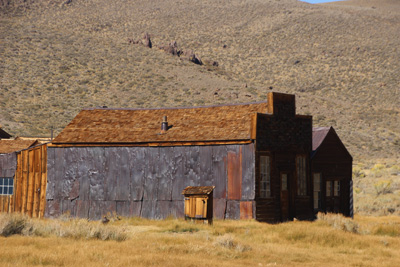 And now… travelogue.
And now… travelogue.
Mono Lake, Ca.
The calcium carbonate towers, with their knobs and twists, that decorate the water and the shores of Mono Lake in eastern California were (and are) formed by the interaction of freshwater springs below the lake’s surface and the highly mineralized lake water. They’re called tufa. Mono Lake’s salinity is much higher than any ocean; the only things that live in it are brine shrimp and alkaline fly larvae, both of which provide a banquet for many varieties of birds. The lake is currently 65 square miles in area, but it used to be much larger. The Owens Valley project diverted water from the lake to be used by Los Angeles for decades until it was finally stopped only a few years ago. Many of the tufa are now on dry land, surrounded by sagebrush and rabbit brush. (The state’s plan to let the lake’s surface rise back to its 1950s level of 6410 feet above sea level has been stymied by the state’s drought.)
A lot of people, including me, see faces and figures in the gnarled columns. The most numerous tufa are visible at South Tufa, the lake’s south shore, and Navy Beach, less than one mile away, holds the sand tufa, towers that formed in the lake’s sandy bottom and collected sand as a surface layer. They look a bit like fabric, or like ancient cities or temples… and a little like some monster from Doctor Who.
[caption id=”attachment_107990″ align=”alignleft” /> Sand Tufa at Navy Beach, Mono Lake. Image by M. Deeds
I have some issues with high altitudes, but at about 6300 feet above sea level I did okay. It was places like The Devil’s Post Pile Monument and Bodie that gave me pause.
The Mono Basin Visitors Center is a beautiful building with a lot of information about the lake and surrounding areas. In the town of Lee Vining, the Mono Lake Committee Information Center has great books, information, and tours during the spring and summer seasons.
Bodie:
The turnoff for Bodie is about twenty miles north of Mono Lake, and about 3,000 feet higher, over 9,000 feet at the high valley that housed California’s best known ghost town. The town is being kept in a state of “arrested decay” where certain buildings are maintained (minimally) by the State Park Service, but and others are allowed to lapse and collapse. Bodie was a mining town with a bad reputation—but it was a boomtown. The Standard Mine Stamping Mill is intact, and the park service offers tours during the tourist season. They were in the off-season when we were there, with minimal staffing, but the park was open for self-guided tours. The 13-mile drive from the turnoff from Highway 395 is winding, and the last several miles are dirt and badly rutted, creating an effect that can be “washboard” or “magic fingers massage on overdrive.”

Bodie cabin in a state of “arrested decay,” Bodie, CA. Image by M. Deeds

Standard Mine Stamping Mill, where quartz was crushed to extract the gold. Bodie, CA
Hot Creek Geological Site:




Those are great photos, Marion. I would like to see the tufa someday.
The tendency to see faces in things is called Pareidolia.
I always mis-remember it as “paradoia.”
It’s simple chemistry, and simply amazing.